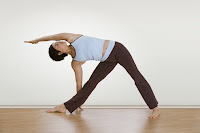By Kimaya Singh
Yoga was born from Indian
culture thousands of years ago and is still deeply entwined with it today.
Although it has made an impact on modern culture, it is still not as
widely practiced in other places as it is in India. That's not to say that it
is any less powerful a practice in other parts of the world, but there's no doubt
that the traditions of Yogic methodology are still largely prevalent even in
today's modern Indian culture. In fact, those traditions and views add to the
mystical yet calm practice of modern practitioners.
Around the world, there are Yoga schools, studios, and classes are often taught within fitness centers and gyms. However, the ashrams in India are dedicated solely the practice. Pranayama, japa, mantra, asanas and meditation are a daily part of many people's lives within India. It isn't just a fad or a form of exercise, it is a central influence. It is closely linked with Indian history and many of the words associated with Yoga are taken directly from Sanskrit. It is practiced from a very young age, and the values that are inherent within the practice of Yoga training can be seen in many different facets of life.
Maintaining traditions is a very important part of Indian culture. This importance is deeply ingrained into those who practice in ways that many modern practitioners don't always readily understand. Many people from other countries who go to India to experience Yoga instructor training, walk away with a newfound understanding and respect for their practice that they didn't have before.
That's not to say that everyone needs to go to India in order to get the full experience of Yoga. However, studying the traditions, the beginnings and the philosophy can definitely help to deepen someone's practice. For this reason any course designed for teacher training should be well-rounded and contain an overview of all Yogic aspects.
A healthy respect for the body and the importance of treating it well are just two of the many aspects of Yogic philosophy. Yet, those directives can mean something quite different from culture to culture. The careful guidance of one’s guru (Yoga teacher) can help a person build a larger awareness of the outside world while helping to built or sustain inner strength and peace. That and many other reasons are why it is still so integral and widely practiced within Indian culture.
© Copyright – Aura Wellness Center – Publications Division
Please feel free to share our posts with your friends, colleagues, and favorite social media networks.









